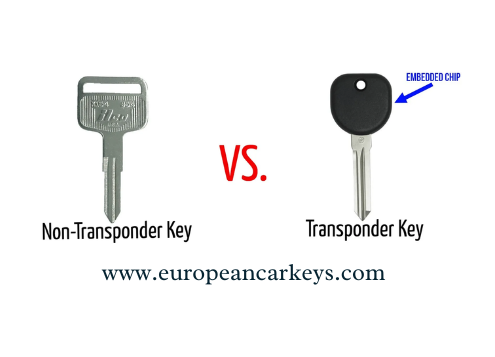Have you ever been in the middle of a drive and suddenly your key gets stuck in the ignition? It’s one of the most frustrating and baffling car problems you can experience. In this blog post, we’ll unlock the mystery behind why keys get stuck in the ignition and provide some insight into how you can prevent it from happening in the future.
The Anatomy of an Ignition
The ignition system of a car is an intricate network of components that work together to start and run the vehicle. Understanding the anatomy of an ignition can help shed some light on why keys get stuck in the ignition.
At the heart of the ignition system is the ignition cylinder, also known as the ignition switch. This is the part of the car where you insert your key to start the engine. The ignition cylinder is connected to various electrical components, such as the starter motor and the fuel pump. When you turn the key in the ignition, it activates these components and allows fuel to flow into the engine, enabling it to start.
The ignition cylinder is connected to the steering column, which is responsible for turning the front wheels of the car. The steering column lock, located within the steering column, is a mechanism that locks the steering wheel in place when the ignition is turned off. This is a safety feature that prevents the car from being driven without the key in the ignition. However, sometimes this mechanism can malfunction, causing the key to get stuck in the ignition.
Other components of the ignition system include the ignition coil, which generates the high voltage needed to ignite the fuel in the engine, and the ignition switch, which sends an electrical signal to the ignition coil to start the engine. Any issues with these components can also lead to a key getting stuck in the ignition.
Understanding the anatomy of an ignition can help you diagnose and resolve issues that may cause a key to get stuck. In the following sections, we will explore some common reasons for key sticking and provide solutions and prevention techniques to keep your ignition running smoothly.
Common Reasons for Key Sticking
Now that we understand the anatomy of an ignition system, let’s delve into the common reasons why keys get stuck in the ignition. There are a few potential culprits that can cause this frustrating problem.
One possible reason is an issue with the steering column lock. As mentioned earlier, this mechanism is responsible for locking the steering wheel in place when the ignition is turned off. If the lock malfunctions, it can prevent the key from being removed from the ignition. This can be due to wear and tear over time or a faulty mechanism.
Another common cause is a worn or damaged ignition cylinder. The ignition cylinder is the part of the ignition system where you insert your key to start the engine. Over time, the cylinder can become worn down or damaged, making it difficult for the key to turn or causing it to get stuck. This can be especially problematic if the cylinder is not aligned properly with the ignition switch.
Lastly, mechanical problems with the key itself can also lead to sticking. If the key is bent, warped, or damaged in any way, it may not fit properly in the ignition cylinder. This can cause the key to get stuck when trying to start or turn off the car.
Issue with Steering Column Lock
Have you ever experienced the frustration of trying to remove your key from the ignition, only to find that it’s stuck? One common culprit for this issue is a problem with the steering column lock.
The steering column lock is a mechanism located within the steering column that locks the steering wheel in place when the ignition is turned off. This is an important safety feature that prevents the car from being driven without the key in the ignition. However, over time, this mechanism can wear down or become faulty, causing the key to get stuck.
When the steering column lock malfunctions, it can prevent the key from being removed from the ignition. This can be incredibly frustrating, especially when you’re in a rush or need to quickly switch drivers. The key may turn easily in the ignition, but when you try to remove it, it simply won’t budge.
To fix this issue, you may need to have the steering column lock repaired or replaced. This typically requires the expertise of a professional mechanic, as the steering column is a complex part of the car’s infrastructure. They will be able to diagnose the problem and determine the best course of action to get your key unstuck.
Preventing issues with the steering column lock can be challenging, as wear and tear are inevitable over time. However, there are a few steps you can take to minimize the chances of the lock malfunctioning. Regular maintenance, such as lubricating the lock mechanism, can help keep it in good working condition. Additionally, avoid putting excessive pressure on the steering wheel or forcefully turning the key in the ignition, as these actions can contribute to the lock wearing down more quickly.
Worn or Damaged Ignition Cylinder
If you’ve ever found yourself struggling to remove your key from the ignition, a worn or damaged ignition cylinder could be the culprit. The ignition cylinder is the part of the ignition system where you insert your key to start the engine. Over time, this cylinder can become worn down or damaged, making it difficult for the key to turn or causing it to get stuck.
A worn or damaged ignition cylinder can lead to a variety of issues. For example, the key may not turn smoothly in the cylinder, requiring you to jiggle it or apply extra force to get the engine started. In some cases, the key may even get stuck, making it impossible to start or turn off the car.
The causes of a worn or damaged ignition cylinder can vary. Normal wear and tear over time can contribute to this problem, as can the use of a heavy keychain that puts excessive pressure on the cylinder. Additionally, if the cylinder is not aligned properly with the ignition switch, it can cause the key to stick.
If you suspect that your ignition cylinder is worn or damaged, it’s important to address the issue promptly. Ignoring the problem can lead to further damage and even the possibility of the key breaking off in the cylinder.
To resolve this issue, it’s best to consult a professional mechanic. They will be able to diagnose the problem and determine the best course of action. In some cases, the ignition cylinder may need to be repaired or replaced. The mechanic will have the expertise and tools necessary to complete this task safely and effectively.
In the next section, we’ll explore another potential cause of a stuck key: mechanical problems with the key itself. Stay tuned to uncover more secrets about why keys get stuck in the ignition.
Mechanical Problems with the Key
Keys getting stuck in the ignition can be a major inconvenience, and one potential cause of this frustrating problem is mechanical issues with the key itself. Your key may seem like a simple piece of metal, but it plays a crucial role in starting and turning off your car. If the key is bent, warped, or damaged in any way, it can prevent it from fitting properly in the ignition cylinder and cause it to get stuck.
Mechanical problems with the key can occur for a variety of reasons. Perhaps you accidentally dropped your key, causing it to become bent or warped. Maybe the key has been exposed to extreme temperatures or excessive force, resulting in damage. Over time, regular wear and tear can also take a toll on the key, making it more prone to getting stuck in the ignition.
To resolve this issue, the best course of action is to have a new key made. You can visit your local car dealership or a locksmith to have a replacement key cut. It’s important to make sure the new key is made using the proper specifications for your vehicle. This will ensure a snug fit in the ignition cylinder and reduce the chances of it getting stuck.
In addition to getting a new key, it’s also a good idea to take preventive measures to avoid future mechanical issues. Avoid using excessive force when turning the key, as this can cause unnecessary strain. Keep your key separate from heavy or bulky keychains that can add additional pressure and lead to damage. By taking these simple steps, you can help prevent mechanical problems with your key and keep your ignition running smoothly.
Solutions for a Stuck Key
Dealing with a stuck key in the ignition can be incredibly frustrating, but fear not! There are several solutions you can try to get that stubborn key unstuck.
One possible solution is to wiggle the steering wheel while simultaneously turning the key. Sometimes the steering column lock can get jammed, causing the key to stick. By gently turning the steering wheel back and forth, you can relieve the pressure on the lock and allow the key to come out. Be careful not to use excessive force, as this could damage the ignition or steering mechanism.
If wiggling the steering wheel doesn’t work, you can try spraying a small amount of lubricant, such as WD-40, into the ignition cylinder. This can help loosen any debris or dirt that may be causing the key to stick. Be sure to use a lubricant that is safe for automotive use and follow the instructions on the product label.
In some cases, a stuck key may require professional assistance. If none of the above solutions work, it’s best to consult a reputable mechanic or locksmith. They will have the expertise and tools necessary to safely remove the key and diagnose any underlying issues with the ignition system.
Prevention is key when it comes to avoiding a stuck key in the future. Regular maintenance, such as cleaning and lubricating the ignition cylinder, can help prevent debris buildup and ensure smooth operation. Avoid using excessive force when inserting or turning the key, as this can cause unnecessary strain on the ignition components.
Prevention Techniques
Prevention is key when it comes to avoiding the frustration of a stuck key in the ignition. Fortunately, there are several techniques you can implement to help keep your ignition running smoothly and prevent keys from getting stuck in the future.
One important prevention technique is regular maintenance. It’s crucial to keep your ignition cylinder clean and free from debris. Over time, dirt and grime can accumulate in the cylinder, making it more difficult for the key to turn and increasing the chances of it getting stuck. Cleaning the ignition cylinder periodically with a soft cloth and a mild cleaning solution can help prevent debris buildup and ensure smooth operation.
Another prevention technique is lubrication. Applying a small amount of lubricant, such as graphite or silicone spray, to the key and the inside of the ignition cylinder can reduce friction and help the key slide in and out more easily. Be sure to use a lubricant that is specifically designed for automotive use and follow the instructions on the product label.
Avoid using excessive force when inserting or turning the key. Using too much force can put unnecessary strain on the ignition components and increase the likelihood of a key getting stuck. Instead, use a gentle and steady hand when operating the ignition.
Finally, consider minimizing the weight and bulkiness of your keychain. A heavy or bulky keychain can put additional pressure on the ignition cylinder, leading to wear and damage over time. Remove any unnecessary keys or keychains and keep only the essential keys on your ignition keychain.





